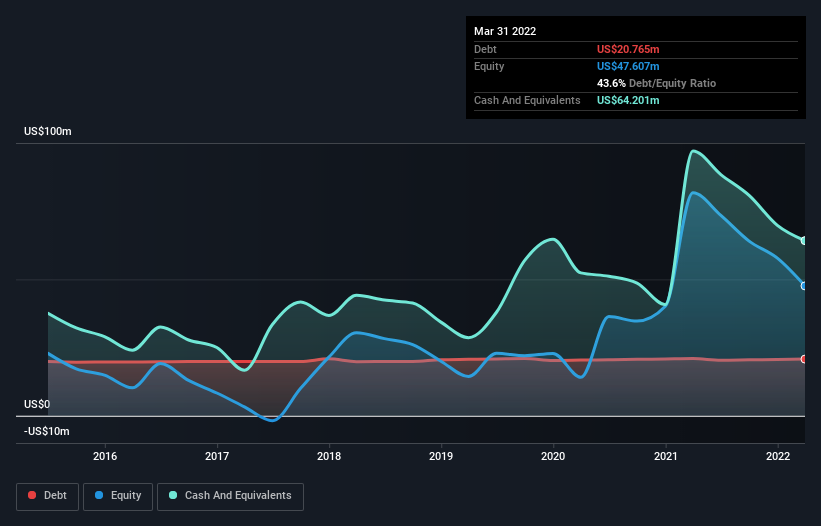Health Check: How Prudently Does DURECT (NASDAQ:DRRX) Use Debt?
Warren Buffett famously said, 'Volatility is far from synonymous with risk.' So it might be obvious that you need to consider debt, when you think about how risky any given stock is, because too much debt can sink a company. We can see that DURECT Corporation (NASDAQ:DRRX) does use debt in its business. But is this debt a concern to shareholders?
What Risk Does Debt Bring?
Debt assists a business until the business has trouble paying it off, either with new capital or with free cash flow. Part and parcel of capitalism is the process of 'creative destruction' where failed businesses are mercilessly liquidated by their bankers. While that is not too common, we often do see indebted companies permanently diluting shareholders because lenders force them to raise capital at a distressed price. By replacing dilution, though, debt can be an extremely good tool for businesses that need capital to invest in growth at high rates of return. When we think about a company's use of debt, we first look at cash and debt together.
View our latest analysis for DURECT
What Is DURECT's Debt?
As you can see below, DURECT had US$20.8m of debt, at March 2022, which is about the same as the year before. You can click the chart for greater detail. But it also has US$64.2m in cash to offset that, meaning it has US$43.4m net cash.
How Strong Is DURECT's Balance Sheet?
Zooming in on the latest balance sheet data, we can see that DURECT had liabilities of US$9.02m due within 12 months and liabilities of US$23.9m due beyond that. Offsetting these obligations, it had cash of US$64.2m as well as receivables valued at US$960.0k due within 12 months. So it can boast US$32.2m more liquid assets than total liabilities.
This excess liquidity is a great indication that DURECT's balance sheet is almost as strong as Fort Knox. With this in mind one could posit that its balance sheet means the company is able to handle some adversity. Succinctly put, DURECT boasts net cash, so it's fair to say it does not have a heavy debt load! The balance sheet is clearly the area to focus on when you are analysing debt. But ultimately the future profitability of the business will decide if DURECT can strengthen its balance sheet over time. So if you want to see what the professionals think, you might find this free report on analyst profit forecasts to be interesting.
Over 12 months, DURECT made a loss at the EBIT level, and saw its revenue drop to US$14m, which is a fall of 55%. That makes us nervous, to say the least.
So How Risky Is DURECT?
Statistically speaking companies that lose money are riskier than those that make money. And the fact is that over the last twelve months DURECT lost money at the earnings before interest and tax (EBIT) line. And over the same period it saw negative free cash outflow of US$32m and booked a US$37m accounting loss. Given it only has net cash of US$43.4m, the company may need to raise more capital if it doesn't reach break-even soon. Overall, its balance sheet doesn't seem overly risky, at the moment, but we're always cautious until we see the positive free cash flow. There's no doubt that we learn most about debt from the balance sheet. But ultimately, every company can contain risks that exist outside of the balance sheet. These risks can be hard to spot. Every company has them, and we've spotted 2 warning signs for DURECT you should know about.
At the end of the day, it's often better to focus on companies that are free from net debt. You can access our special list of such companies (all with a track record of profit growth). It's free.
Have feedback on this article? Concerned about the content? Get in touch with us directly. Alternatively, email editorial-team (at) simplywallst.com.
This article by Simply Wall St is general in nature. We provide commentary based on historical data and analyst forecasts only using an unbiased methodology and our articles are not intended to be financial advice. It does not constitute a recommendation to buy or sell any stock, and does not take account of your objectives, or your financial situation. We aim to bring you long-term focused analysis driven by fundamental data. Note that our analysis may not factor in the latest price-sensitive company announcements or qualitative material. Simply Wall St has no position in any stocks mentioned.

